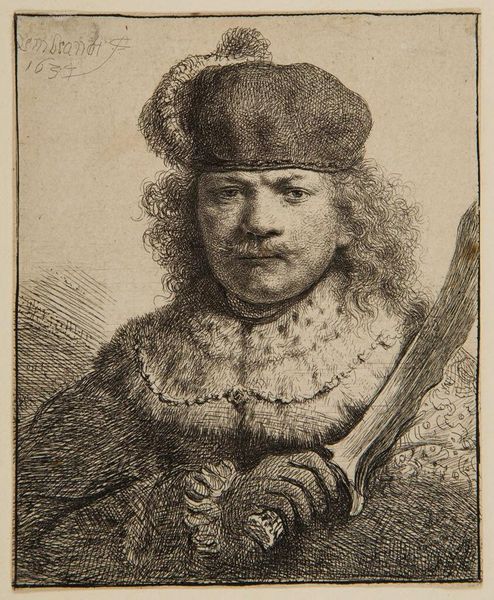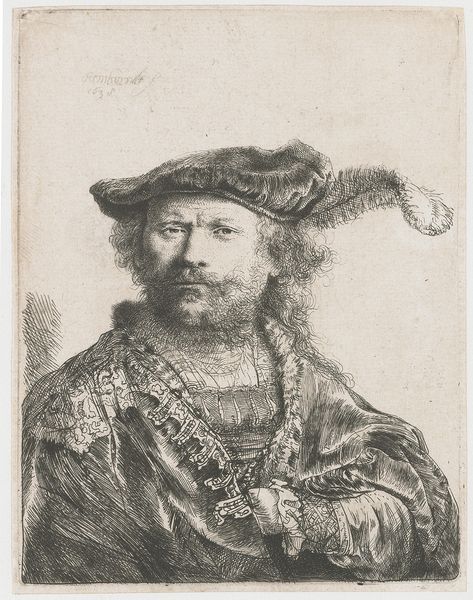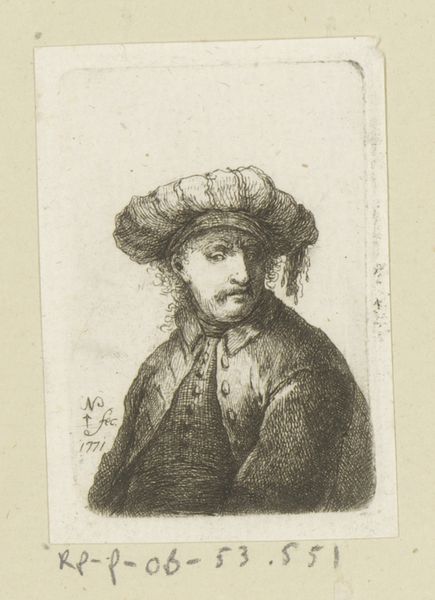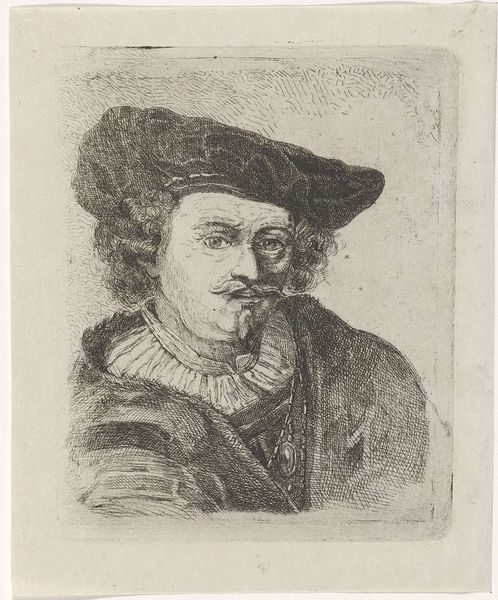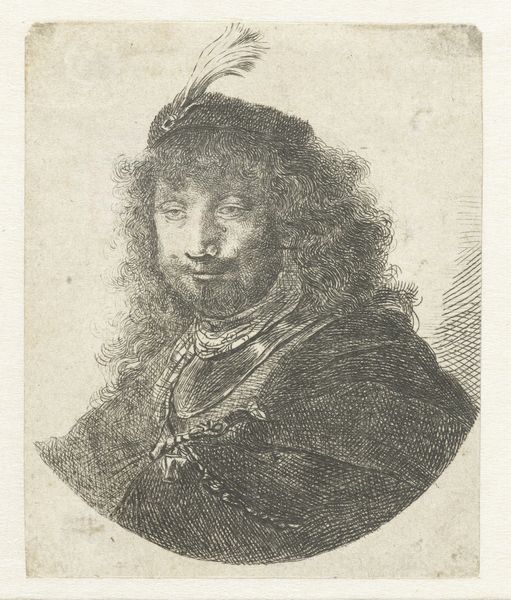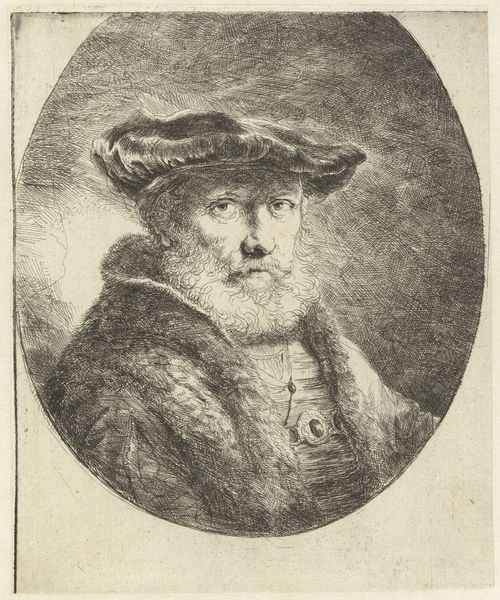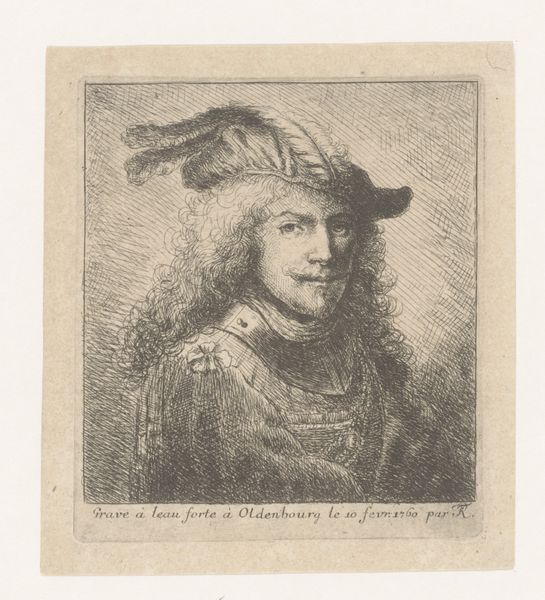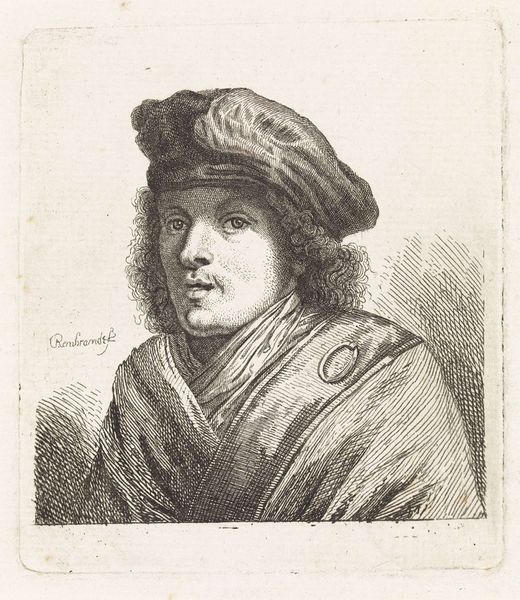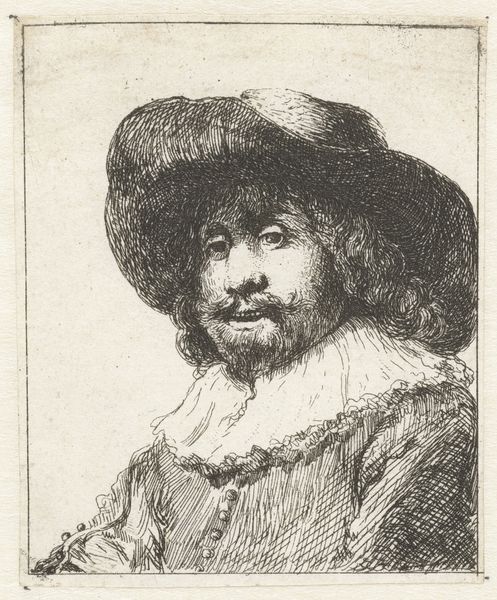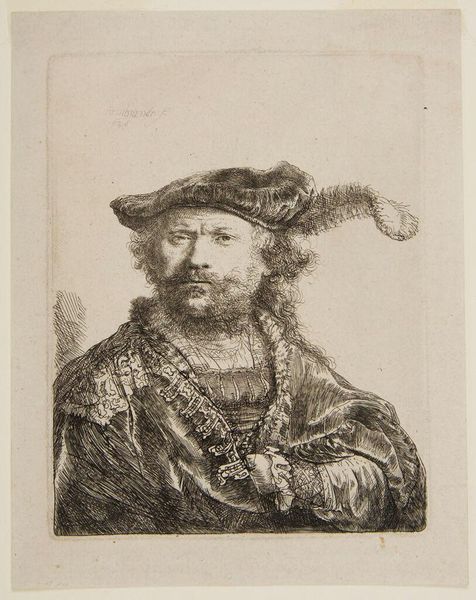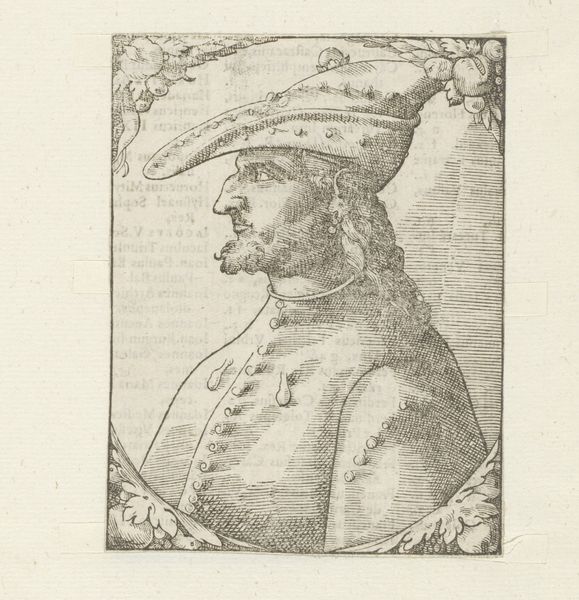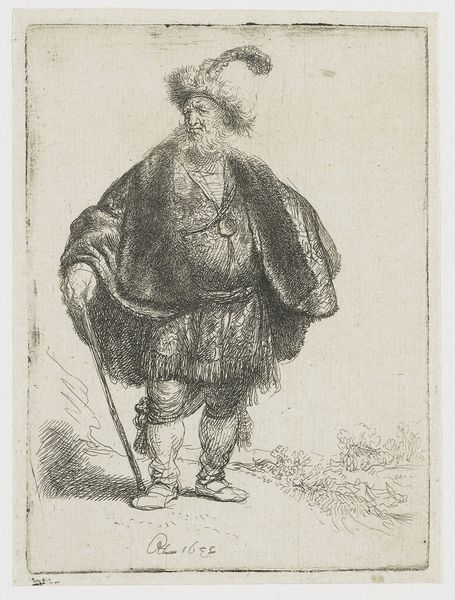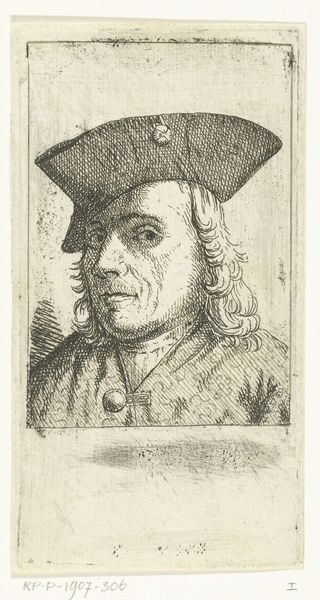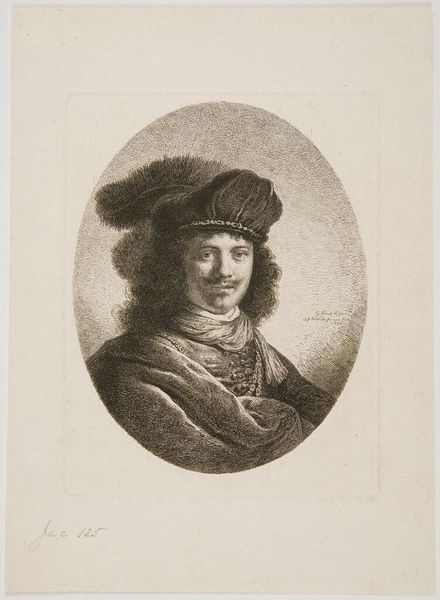
print, etching
#
portrait
#
self-portrait
#
baroque
#
dutch-golden-age
# print
#
etching
Copyright: Public domain
Curator: Looking at Rembrandt van Rijn’s "Self-portrait with raised sabre", executed as an etching in 1634, what strikes you most immediately? Editor: The texture! All those lines… it’s so densely worked. There's something theatrical about it too; a costumed character perhaps caught mid-performance. It feels dramatic and yet contained within this small frame. Curator: Indeed, the etching medium itself lends to that dense, almost palpable texture. Considering the time, the sword acts as a very potent symbol of authority. Does that weapon sit easily in a self-portrait, and why might he present himself armed? Editor: It's complicated, isn’t it? In 1634, Rembrandt was enjoying early success in Amsterdam as a portraitist. But this isn't just a display of power. The attire—that ornate fur and plush hat—signals an interest in theater and masquerade. I believe that such accoutrements have the capacity to transform someone psychologically and symbolically. Here the cultural memory and weight that this sort of symbol carried with the burghers of Amsterdam becomes critical. Curator: Absolutely. There is that inherent tension within the artist as he explores his own likeness, and he uses historical visual motifs for their expressive possibilities. The sword as a symbol can represent authority or protection. Yet Rembrandt uses it as a way to explore self-definition and how others perceive his persona, or how he performs in Amsterdam’s theatre of commerce. Editor: You’ve reminded me of the political role of imagery in the Dutch Golden Age. With Dutch independence still fresh in the collective mind, did paintings like this reaffirm masculine power during the 17th Century in Amsterdam? It feels very deliberate somehow. Curator: I concur. It also speaks of his active contribution to solidifying the symbolic language around identity in Dutch portraiture more generally. Thanks for your reflections, I feel like I see it in a completely new light! Editor: As do I! These layered conversations about artworks remind us how powerful and necessary visual analysis and reflection are to creating enduring dialogue.
Comments
No comments
Be the first to comment and join the conversation on the ultimate creative platform.
